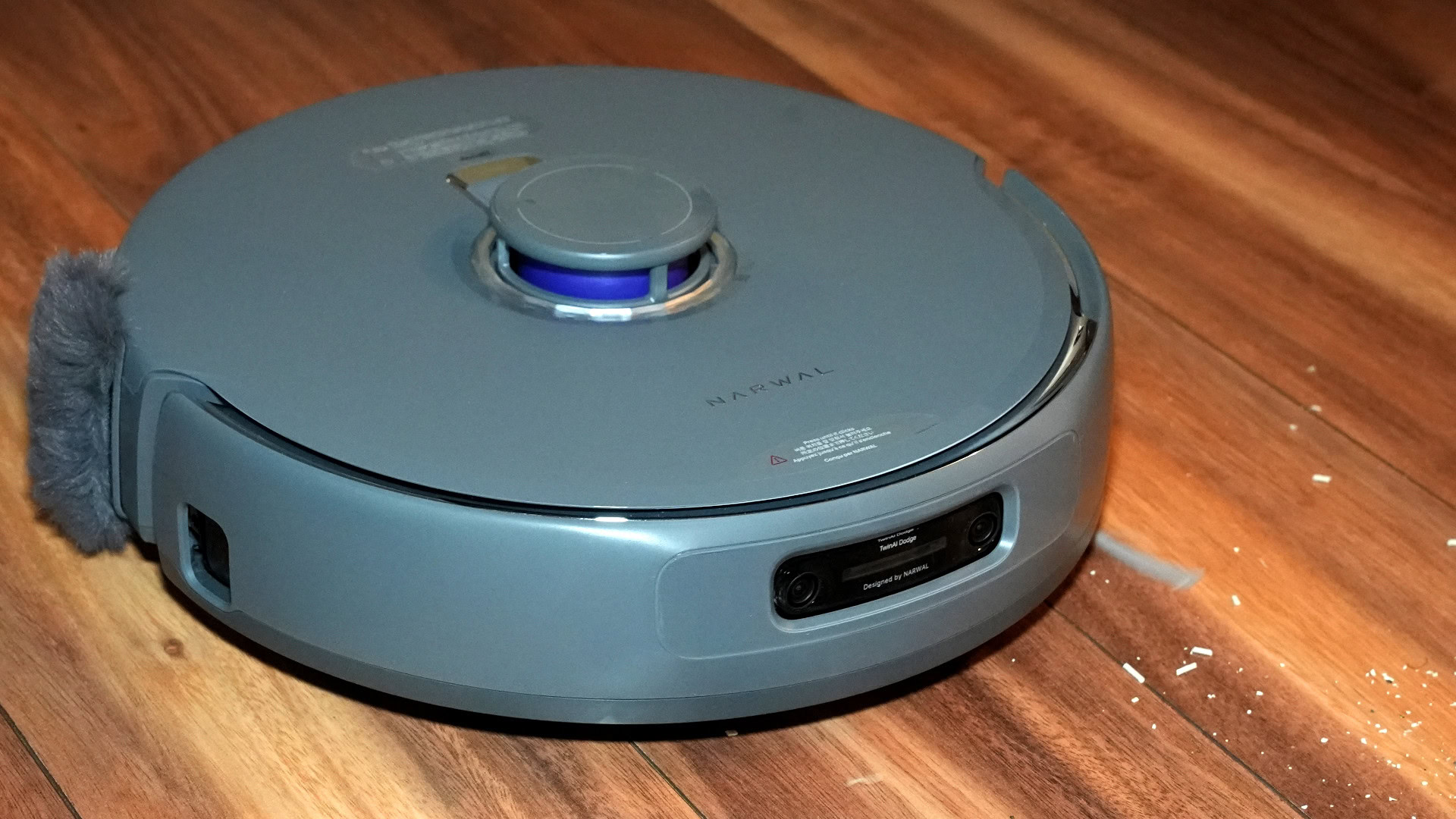Keeping Your "Antique" ASP.NET 4.x Projects Alive on macOS with ServBay
There are three major challenges in the programming world: cross-platform compatibility, legacy code, and bugs. When a macOS developer needs to maintain an ASP.NET Framework 4.x project, it's a scenario where challenges pile up, often leading to immense frustration (enough to make them want to eat their keyboard!). What is ASP.NET Framework 4.x? Before .NET Core and modern .NET (.NET 5+) brought cross-platform capabilities, Microsoft's flagship web development platform was ASP.NET, built on the .NET Framework. And ASP.NET Framework 4.x (covering versions 4.0 to 4.8) represents the mature, stable, and widely adopted phase of this framework. In its heyday, it was the go-to technology for building enterprise-grade, scalable web applications, web services, and APIs, especially in Windows server environments. Unlike .NET (Core / 5+) which can be used cross-platform, much of ASP.NET Framework 4.x's power stemmed from its deep integration with the Windows operating system. It heavily relies on Windows-specific components and services like IIS, Windows Registry, GAC, etc. Precisely because of its long-standing dominance and stability, a vast number of critical business applications worldwide are still built and running on ASP.NET Framework 4.x. So, as a developer, you often don't have the choice of whether or not to use ASP.NET Framework 4.x. The macOS Developer vs. ASP.NET Framework 4.x Conflict Once a macOS user needs to develop for ASP.NET Framework 4.x, a series of severe challenges arise. The core issue is the framework's fundamental incompatibility with macOS: Fundamental Operating System Incompatibility: ASP.NET Framework 4.x is deeply integrated into the Windows ecosystem, relying on native Windows components like IIS, Windows Registry, GAC, and Windows Event Log. It cannot run directly or natively on macOS. Lack of Native, Efficient IDE Support: Visual Studio (Windows version) is the gold standard for developing ASP.NET Framework, offering comprehensive features and the best debugging experience, but it only runs on Windows. Visual Studio for Mac primarily targets .NET Core / .NET 6+ / Xamarin and does not support creating, building, and especially debugging classic ASP.NET Framework 4.x projects. While VS Code can edit code, it lacks project management, integrated build systems, visual designers (like Web Forms Designer), and most importantly, a seamless debugging experience for IIS/IIS Express. Therefore, macOS developers often resort to installing virtual machines to solve these problems, but using VMs introduces new issues: Performance Overhead: VMs consume significant system resources (CPU, memory, disk), potentially slowing down the Mac. Increased Costs: Requires purchasing a Windows license, and possibly VM software fees. Fragmented Experience: Frequent switching between macOS and the Windows VM; file sharing and network settings might require extra configuration. Hardware Strain: Places higher demands on the Mac's hardware configuration. ServBay Helps macOS Developers Cope Perfectly Fortunately, this isn't an unsolvable problem. Using ServBay can perfectly address these issues. ServBay, with its powerful built-in Mono environment, makes developing and testing ASP.NET Framework 1.1/2.0/3.x/4.x (up to 4.7.x supported) on macOS simple and feasible. Furthermore, ServBay comes with the XSP development server, offering you two main ways to run ASP.NET Framework 4.x applications: Using XSP for rapid development and testing. And using Nginx + FastCGI to deploy more stable applications that are closer to a production environment. Prerequisites Install ServBay: Ensure you have ServBay v1.12.0 or later installed on your macOS. Download link: https://www.servbay.com/download Install Mono: Open the ServBay application. In the left navigation bar, select "Packages." In the package list, find the ".NET" category and click to expand it. Find "Mono 6" (version should be 6.14.0 or higher), click the "Install" button on the right, and wait for the installation to complete. Prepare Your ASP.NET Project Project Files: Ensure you have an ASP.NET Framework 4.x Web Application or Web Site project. Recommended Location: We strongly recommend placing your website project in ServBay's centrally managed www directory, i.e., /Applications/ServBay/www/. Create a separate subdirectory for each project. Example: If your project is named MyWebApp, the recommended path is /Applications/ServBay/www/MyWebApp. In the following steps, we will use /Applications/ServBay/www/MyWebApp as an example path. Be sure to replace it with your project's actual path. Method One: Using XSP (Built-in Development Server) XSP is a lightweight ASP.NET web server designed specifically for Mono, ideal for development and quick testing phases. The Mono 6 package installed by ServBay includes XSP4 (corresponding to ASP.NET 4.x).

There are three major challenges in the programming world: cross-platform compatibility, legacy code, and bugs. When a macOS developer needs to maintain an ASP.NET Framework 4.x project, it's a scenario where challenges pile up, often leading to immense frustration (enough to make them want to eat their keyboard!).
What is ASP.NET Framework 4.x?
Before .NET Core and modern .NET (.NET 5+) brought cross-platform capabilities, Microsoft's flagship web development platform was ASP.NET, built on the .NET Framework. And ASP.NET Framework 4.x (covering versions 4.0 to 4.8) represents the mature, stable, and widely adopted phase of this framework.
In its heyday, it was the go-to technology for building enterprise-grade, scalable web applications, web services, and APIs, especially in Windows server environments. Unlike .NET (Core / 5+) which can be used cross-platform, much of ASP.NET Framework 4.x's power stemmed from its deep integration with the Windows operating system. It heavily relies on Windows-specific components and services like IIS, Windows Registry, GAC, etc.
Precisely because of its long-standing dominance and stability, a vast number of critical business applications worldwide are still built and running on ASP.NET Framework 4.x.
So, as a developer, you often don't have the choice of whether or not to use ASP.NET Framework 4.x.
The macOS Developer vs. ASP.NET Framework 4.x Conflict
Once a macOS user needs to develop for ASP.NET Framework 4.x, a series of severe challenges arise. The core issue is the framework's fundamental incompatibility with macOS:
Fundamental Operating System Incompatibility: ASP.NET Framework 4.x is deeply integrated into the Windows ecosystem, relying on native Windows components like IIS, Windows Registry, GAC, and Windows Event Log. It cannot run directly or natively on macOS.
-
Lack of Native, Efficient IDE Support:
- Visual Studio (Windows version) is the gold standard for developing ASP.NET Framework, offering comprehensive features and the best debugging experience, but it only runs on Windows.
- Visual Studio for Mac primarily targets .NET Core / .NET 6+ / Xamarin and does not support creating, building, and especially debugging classic ASP.NET Framework 4.x projects.
- While VS Code can edit code, it lacks project management, integrated build systems, visual designers (like Web Forms Designer), and most importantly, a seamless debugging experience for IIS/IIS Express.
Therefore, macOS developers often resort to installing virtual machines to solve these problems, but using VMs introduces new issues:
- Performance Overhead: VMs consume significant system resources (CPU, memory, disk), potentially slowing down the Mac.
- Increased Costs: Requires purchasing a Windows license, and possibly VM software fees.
- Fragmented Experience: Frequent switching between macOS and the Windows VM; file sharing and network settings might require extra configuration.
- Hardware Strain: Places higher demands on the Mac's hardware configuration.
ServBay Helps macOS Developers Cope Perfectly
Fortunately, this isn't an unsolvable problem. Using ServBay can perfectly address these issues.
ServBay, with its powerful built-in Mono environment, makes developing and testing ASP.NET Framework 1.1/2.0/3.x/4.x (up to 4.7.x supported) on macOS simple and feasible. Furthermore, ServBay comes with the XSP development server, offering you two main ways to run ASP.NET Framework 4.x applications:
- Using XSP for rapid development and testing.
- And using Nginx + FastCGI to deploy more stable applications that are closer to a production environment.
Prerequisites
- Install ServBay: Ensure you have ServBay v1.12.0 or later installed on your macOS. Download link: https://www.servbay.com/download
- Install Mono:
- Open the ServBay application.
- In the left navigation bar, select "Packages."
- In the package list, find the ".NET" category and click to expand it.
- Find "Mono 6" (version should be 6.14.0 or higher), click the "Install" button on the right, and wait for the installation to complete.
Prepare Your ASP.NET Project
- Project Files: Ensure you have an ASP.NET Framework 4.x Web Application or Web Site project.
- Recommended Location: We strongly recommend placing your website project in ServBay's centrally managed
wwwdirectory, i.e.,/Applications/ServBay/www/. Create a separate subdirectory for each project.- Example: If your project is named
MyWebApp, the recommended path is/Applications/ServBay/www/MyWebApp. - In the following steps, we will use
/Applications/ServBay/www/MyWebAppas an example path. Be sure to replace it with your project's actual path.
- Example: If your project is named
Method One: Using XSP (Built-in Development Server)
XSP is a lightweight ASP.NET web server designed specifically for Mono, ideal for development and quick testing phases. The Mono 6 package installed by ServBay includes XSP4 (corresponding to ASP.NET 4.x).
Tip:
- If you want to run an ASP.NET 1.1 project, use the
xspcommand. - If you want to run an ASP.NET 2.0 project, use the
xsp2command.
Steps:
- Open Terminal: Open the macOS Terminal application.
-
Navigate to Project Directory: Use the
cdcommand to go to the root directory of your ASP.NET project (the directory containing theweb.configfile).
# Example: Navigate to the MyWebApp project directory cd /Applications/ServBay/www/MyWebApp Start XSP Server: In the project root directory, run the following command to start the XSP4 server. You can specify a port number (e.g., 8080 or 9000) to avoid conflicts with other services in ServBay.
# Start the project in the current directory on port 9000
xsp4 --port 9000
-
xsp4: Invokes the XSP server suitable for .NET 4.x. -
--port 9000: Specifies the port number the server will listen on.
Access Application: Open your web browser and go to
http://localhost:9000orhttp://127.0.0.1:9000. You should see your ASP.NET application running.Stop Server: When you're done with development or testing, return to the terminal window and press
Ctrl + Cor theEnterkey to stop the XSP server.
Advantages:
- Simple configuration, quick startup.
- Ideal for local development and debugging.
Disadvantages:
- Performance is not as good as production-grade servers like Nginx.
- Relatively basic functionality, doesn't fully simulate a production environment.
Method Two: Using Nginx + FastCGI
This method uses ServBay-managed Nginx as the front-end web server, forwarding dynamic requests via the FastCGI protocol to a Mono backend process (fastcgi-mono-server4) for handling. This approach is closer to a production deployment and offers better performance.
Tip:
- If you want to run an ASP.NET 1.1 project, use the
fastcgi-mono-servercommand. - If you want to run an ASP.NET 2.0 project, use the
fastcgi-mono-server2command.
Steps:
- Ensure Mono and Nginx are Installed and Running:
- Install Mono 6 and Nginx via ServBay's "Packages."
- In ServBay's "Services" section, ensure the Nginx service is started.
- Prepare ASP.NET Project: Ensure your project is located at the recommended path, e.g.,
/Applications/ServBay/www/MyWebApp. - Start FastCGI Mono Server:
- Open a new terminal window.
- Run the
fastcgi-mono-server4process. This process is responsible for listening to FastCGI requests from Nginx and executing your ASP.NET code.
# Example: Start FastCGI service for MyWebApp project
fastcgi-mono-server4 --applications=/:/Applications/ServBay/www/MyWebApp \
--socket=tcp:127.0.0.1:9001 \
--loglevels=Standard \
--printlog
-
--applications=/:/Applications/ServBay/www/MyWebApp: Maps the website's root path (/) to your project's physical path. Be sure to replace/Applications/ServBay/www/MyWebAppwith your project's actual path. -
--socket=tcp:127.0.0.1:9001: Specifies the TCP address and port for the FastCGI server to listen on. Ensure this port (e.g., 9001) is not in use and matches thefastcgi_passdirective in the Nginx configuration below. -
--loglevels=Standard --printlog: (Optional) Prints standard level logs to the terminal, useful for debugging. -
Note: This terminal window needs to remain open to run the FastCGI service. For long-term running, you might need to use tools like
nohuporscreen/tmuxto run it in the background.
- Configure Nginx Site:
- In ServBay, go to the "Sites" section.
- Click "Add Site" or select an existing site to edit.
- Set Domain Name: e.g.,
mywebapp.test. ServBay will automatically add it to your Hosts file. - Set Website Root Directory: Very important! Set this to the actual path of your ASP.NET project, e.g.,
/Applications/ServBay/www/MyWebApp. This will correctly set therootdirective in the Nginx configuration. - Crucial: Check/Edit Nginx Configuration File: Click the "Custom Configuration" checkbox in the top right of the site settings. ServBay will generate a basic configuration based on the website root directory you set. You need to ensure the
location /and@mono(or a similarly named location block) are configured correctly to proxy requests to the FastCGI Mono Server. - An example of parts to check or add, based on ServBay's auto-generated configuration:
server {
listen 443 ssl http2; # Assuming ServBay sets up SSL by default
ssl_protocols TLSv1.2 TLSv1.3;
ssl_ciphers 'TLS_AES_128_GCM_SHA256:TLS_AES_256_GCM_SHA384:TLS_CHACHA20_POLY1305_SHA256:ECDHE-RSA-AES128-GCM-SHA256:ECDHE-RSA-AES256-GCM-SHA384';
ssl_prefer_server_ciphers on;
ssl_session_timeout 1d;
ssl_session_cache shared:ServBay:10m;
ssl_session_tickets off;
ssl_certificate /Applications/ServBay/ssl/private/tls-certs/mywebapp.test/mywebapp.test.crt; # Ensure certificate path is correct
ssl_certificate_key /Applications/ServBay/ssl/private/tls-certs/mywebapp.test/mywebapp.test.key; # Ensure key path is correct
server_name mywebapp.test; # Should match the domain you set in ServBay
root /Applications/ServBay/www/MyWebApp; # **Ensure** this matches your website root directory
index index.html index.htm default.aspx Default.aspx; # Add ASP.NET default documents
location / {
try_files $uri $uri/ @mono; # Try static files, otherwise hand off to @mono
}
# (Optional, but recommended) Nginx directly handles common static files
# location ~* \.(ico|css|js|gif|jpe?g|png|svg|woff|woff2|ttf|eot)$ {
# expires max;
# log_not_found off;
# access_log off;
# }
location @mono {
# Pass requests to the FastCGI Mono Server
# **Port must** match the --socket parameter port used when starting fastcgi-mono-server4
fastcgi_pass 127.0.0.1:9001;
# Necessary FastCGI parameters
include fastcgi_params;
# SCRIPT_FILENAME will be set correctly based on the root directive and $fastcgi_script_name
fastcgi_param SCRIPT_FILENAME $document_root$fastcgi_script_name;
fastcgi_param PATH_INFO ""; # Or $fastcgi_path_info if needed for your app
}
# ServBay might include other default configurations like logs, access control, etc.
# access_log /Applications/ServBay/logs/nginx/mywebapp.test.access.log;
# error_log /Applications/ServBay/logs/nginx/mywebapp.test.error.log;
}
- Save Configuration and Restart Nginx: Save the Nginx configuration file. ServBay should automatically reload Nginx configuration after saving. If there's an error in the configuration, ServBay will show an error. If necessary, you can manually restart Nginx from ServBay's "Services" page.
- Access Application: Open your browser and visit the domain you configured in Nginx (e.g.,
https://mywebapp.test, note the HTTPS protocol here if you configured SSL). Nginx will forward requests tofastcgi-mono-server4, and Mono will execute your ASP.NET code.
Advantages:
- Better performance, more stable.
- Closer to a production deployment method.
- Can leverage Nginx for advanced features like static file handling, load balancing, SSL, etc.
- Higher integration with ServBay's site management, domain, and Hosts management.
Disadvantages:
- Configuration is somewhat more complex than XSP.
- Requires manual management of the
fastcgi-mono-server4process.
Conclusion
For macOS users, developing with ASP.NET Framework 4.x is an exercise in finding solutions amidst limitations. Stemming from real-world project requirements and historical baggage, and given the framework's deep Windows roots, the process is undoubtedly filled with friction and inconvenience. ServBay acts as a bridge, closing the fundamental gap at the OS and toolchain level. It allows macOS developers to more conveniently and quickly manage and maintain their projects, focusing on development itself.








































































































































































![[The AI Show Episode 146]: Rise of “AI-First” Companies, AI Job Disruption, GPT-4o Update Gets Rolled Back, How Big Consulting Firms Use AI, and Meta AI App](https://www.marketingaiinstitute.com/hubfs/ep%20146%20cover.png)




















































































































































































































































































































































































![Beats Studio Pro Wireless Headphones Now Just $169.95 - Save 51%! [Deal]](https://www.iclarified.com/images/news/97258/97258/97258-640.jpg)












































































































